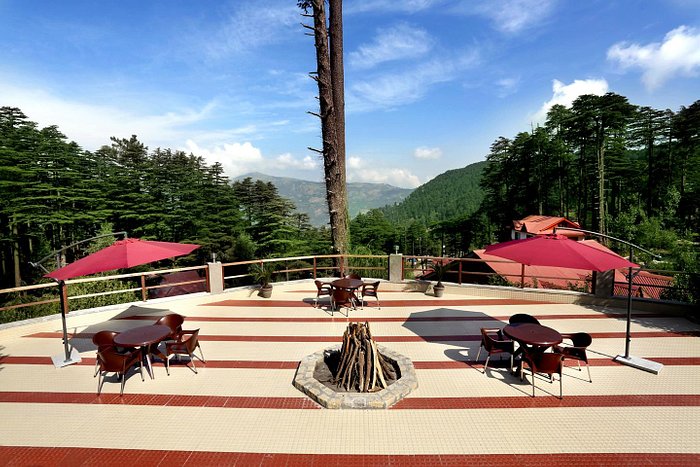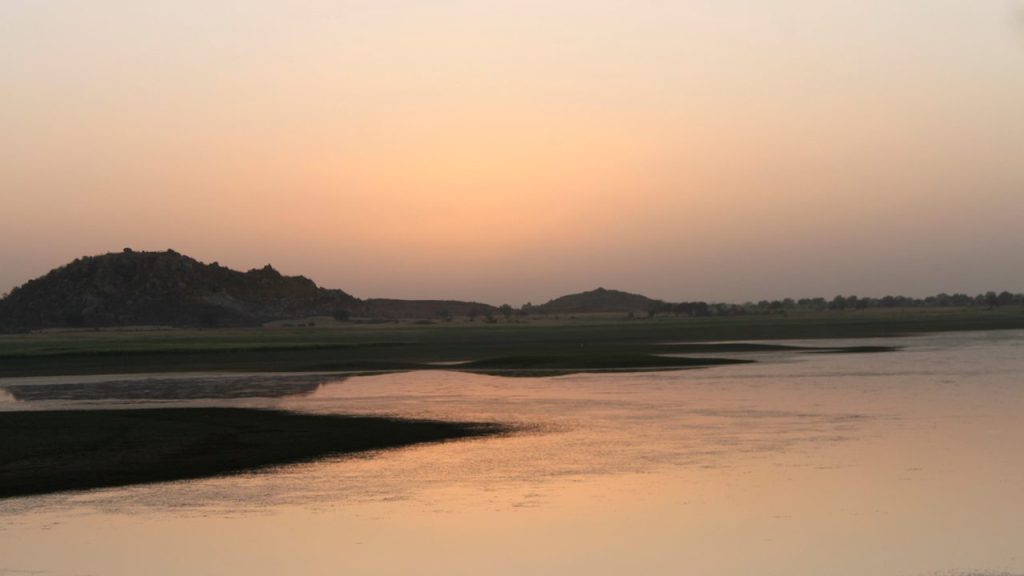Nestled in the serene Lahul Valley, Gemur Monastery is a hidden gem. This ancient Buddhist monastery offers tranquility and spiritual solace.
Gemur Monastery, located in Himachal Pradesh, India, beckons travelers with its rich history and peaceful ambiance. Surrounded by majestic mountains, it is a haven for those seeking a retreat from the hustle and bustle. The monastery, adorned with beautiful murals and statues, offers insights into the age-old traditions of Tibetan Buddhism.
Visitors can immerse themselves in the daily rituals and chants, experiencing a unique blend of spirituality and culture. The tranquil setting also provides breathtaking views, making it a perfect spot for meditation and reflection. Gemur Monastery is more than just a destination; it’s a journey into the heart of Buddhist heritage.

Credit: en.wikipedia.org
Historical Background
Gemur Monastery, nestled in the Lahaul Valley of Himachal Pradesh, India, holds a rich historical background. This serene monastery, surrounded by picturesque landscapes, reflects centuries of spiritual devotion and cultural heritage. Let’s explore the origins and architectural evolution of this sacred site.
Origins Of Gemur Monastery
Gemur Monastery dates back to the 13th century. It was founded by Tibetan Buddhist monks. They sought a tranquil place for meditation and spiritual practice. The monastery quickly became a center for religious learning. Monks and followers gathered here to study and meditate. This holy site has played a significant role in the region’s spiritual life.
Architectural Evolution
The architectural style of Gemur Monastery has evolved over the centuries. Initially, it had simple structures made of stone and wood. These early buildings reflected the local construction techniques. As time passed, new elements were introduced. Influences from Tibetan and Indian architecture became evident. The monastery expanded, adding more rooms and prayer halls.
Intricate murals and carvings adorn the walls of the monastery. These artworks depict Buddhist deities and stories. The monastery’s main hall features a large statue of Buddha. This statue is a focal point for worship and meditation. Gemur Monastery’s architecture blends tradition and evolution. It stands as a testament to the region’s rich cultural tapestry.

Credit: timesofindia.indiatimes.com
Location And Geography
Gemur Monastery, nestled in the serene landscapes of the Lahaul and Spiti district of Himachal Pradesh, is a hidden gem waiting to be discovered. This monastery, steeped in history, offers not only spiritual solace but also a breathtaking view of the surrounding scenery. Located at an altitude of 3,270 meters, it’s a place where you can truly disconnect from the hustle and bustle of daily life.
Scenic Surroundings
Imagine standing at the edge of a cliff, with sweeping views of the Himalayan ranges stretching as far as the eye can see. The Gemur Monastery is perched amidst such awe-inspiring scenery. The lush greenery of summer and the snow-clad beauty of winter make this place a year-round spectacle.
Have you ever wondered what it feels like to be surrounded by mountains that seem to touch the sky? At Gemur, you can find out. The valleys are dotted with tiny villages, and the Chandra River meanders through the region, adding to the picturesque beauty. The tranquil atmosphere invites you to sit back and let nature’s wonders envelop you.
Accessibility
Reaching Gemur Monastery might seem like a challenge, but it’s an adventure worth taking. From Manali, it’s a 140-kilometer journey that typically takes around 6-7 hours by road. The route is scenic, with winding roads offering glimpses of waterfalls, rugged mountains, and quaint villages.
For those who enjoy road trips, the journey to Gemur is an experience in itself. The roads, while narrow and a bit rough in places, are navigable and offer stunning views at every turn. If you’re not driving, local buses and taxis are available from Manali to Keylong, and from there, you can easily hire a taxi to Gemur.
Are you ready to step out of your comfort zone and embrace the journey to this remote monastery? The rewards are immense—both spiritually and visually. Whether you’re an avid traveler or someone seeking peace, the path to Gemur Monastery promises unforgettable memories.
Cultural Significance
The Gemur Monastery holds deep cultural significance in the Lahaul and Spiti valley. It serves as a spiritual haven and cultural hub for the local community. The monastery’s history, architecture, and activities reflect the region’s rich heritage and traditions.
Role In Local Traditions
Gemur Monastery plays a vital role in preserving local traditions. Monks and villagers gather here to practice ancient rituals. The monastery serves as a center for learning and cultural preservation. Young monks learn scriptures and traditional arts. The community respects and follows the monastery’s guidance.
Festivals And Celebrations
The monastery hosts several festivals and celebrations throughout the year. These events bring the community together in joy and devotion. The annual Cham dance is a major highlight. Monks wear vibrant costumes and masks, performing sacred dances. These celebrations strengthen communal bonds and spiritual faith.
During these festivals, the monastery becomes a bustling hub. Locals and tourists alike join in the festivities. Traditional music fills the air, and the monastery grounds come alive with activity. These events showcase the rich cultural tapestry of the region.
Monastic Life
Gemur Monastery offers a serene monastic life in the Lahaul Valley. Monks here devote themselves to meditation and prayer. The peaceful surroundings enhance spiritual growth.
The serene Gemur Monastery, nestled in the breathtaking landscapes of the Lahaul-Spiti region in India, is not just a place of worship but a vibrant center of monastic life. Have you ever wondered what life is like within its ancient walls? Monastic life at Gemur is a harmonious blend of spiritual practices and daily routines that shape the lives of the monks who call this monastery home.Daily Routines
The daily routines at Gemur Monastery are meticulously structured. Each day starts early, often before dawn. Monks rise to the sound of a gong, signaling the beginning of their day. After a brief period of personal hygiene, they gather for morning prayers. Morning Schedule: – 4:30 AM: Wake-up call – 5:00 AM: Morning prayers and chanting – 6:00 AM: Meditation session Following these initial spiritual activities, a simple breakfast is served. Meals at the monastery are modest yet nourishing, often consisting of rice, lentils, and vegetables. After breakfast, monks engage in various chores such as cleaning the monastery, tending to the gardens, and preparing for the day’s study sessions. Afternoon Schedule: – 12:00 PM: Lunch – 1:00 PM: Study and scriptural reading – 3:00 PM: Community service or personal time As the sun begins to set, the community gathers once more for evening prayers, reflecting on the day’s learnings and seeking guidance for the days to come.Spiritual Practices
Gemur Monastery is a hub of spiritual activities that deeply enrich the lives of its residents. The spiritual practices here are diverse and aim to cultivate inner peace and wisdom. Meditation: Daily meditation sessions are a cornerstone of monastic life. These sessions help the monks achieve mental clarity and spiritual insight. You might be surprised to know that even a 15-minute meditation can significantly enhance focus and reduce stress. Chanting: Chanting is another essential practice at Gemur. The rhythmic sounds of mantras fill the air, creating a serene atmosphere. This practice not only aids in concentration but also fosters a sense of community among the monks. Scriptural Study: Monks dedicate several hours each day to studying ancient texts. This rigorous academic schedule ensures that they are well-versed in Buddhist teachings. Have you ever tried reading a spiritual text? It’s not just about understanding the words but experiencing the wisdom they impart. Community Service: Service to the community is viewed as a form of spiritual practice. Monks often engage in teaching, assisting in local healthcare, and participating in environmental conservation efforts. These activities remind them of their connection to the world and the importance of compassion. Monastic life at Gemur Monastery is a remarkable journey of discipline, spirituality, and community service. It’s a way of life that might make you ponder the simplicity and richness of your own daily routines. What aspects of monastic life resonate with you? Could adopting some of these practices bring more peace and purpose into your life? The wisdom of the monastery offers valuable insights for anyone seeking a balanced and fulfilling existence.Ancient Artifacts
Gemur Monastery stands as a beacon of ancient history and spiritual significance. Its walls house a treasure trove of artifacts. These items tell stories of a rich cultural and religious past. Visitors marvel at the ancient relics and manuscripts that adorn its halls.
Sacred Relics
The monastery shelters many sacred relics. Each relic holds deep spiritual meaning. Monks and pilgrims revere these objects. Some relics date back to the early days of Buddhism. Statues, thangkas, and ritual items are carefully preserved. These relics connect the present to the past, creating a sense of timelessness.
Historical Manuscripts
The monastery’s library is a treasure chest of knowledge. It houses ancient manuscripts. These texts contain teachings, stories, and historical records. Many of these manuscripts are handwritten. They offer insights into the region’s history and culture. Scholars and historians visit to study these valuable texts.

Credit: travelshoebum.com
Architectural Marvels
Gemur Monastery stands as a beacon of ancient architecture. This majestic site offers a glimpse into the past. Visitors are often awestruck by its design. The monastery’s beauty lies in its architectural marvels. These include stupas, statues, murals, and frescoes. Each element tells a unique story.
Stupas And Statues
The stupas at Gemur Monastery are remarkable. They serve as sacred monuments. Each stupa holds relics and sacred texts. Statues of Buddha and other deities surround these stupas. The statues are crafted with great detail. Their serene expressions evoke a sense of peace. Many visitors find solace in their presence.
Murals And Frescoes
The murals at Gemur Monastery are breathtaking. They adorn the walls with vibrant colors. These murals depict scenes from Buddhist mythology. Each stroke tells a part of the story. The frescoes are equally captivating. They show intricate designs and patterns. The artists’ skill is evident in every detail. Visitors often spend hours admiring these works of art.
Visitor Experience
Gemur Monastery offers a unique experience for all visitors. The serene surroundings and rich history captivate everyone. Each visit to the monastery leaves a lasting impression. Visitors can explore the beautiful architecture and spiritual ambiance.
Guided Tours
Guided tours at Gemur Monastery enrich your visit. Knowledgeable guides share interesting facts about the monastery’s history. They explain the significance of various artifacts and structures. The tours provide a deeper understanding of the monastery’s cultural heritage.
Visitors get an insider’s view of the monastery. The guides are friendly and eager to answer questions. They make the tour engaging and informative.
Meditation Retreats
Gemur Monastery is also a peaceful place for meditation retreats. The tranquil environment helps visitors find inner peace. Retreats include guided meditation sessions and mindfulness practices. These activities rejuvenate both the mind and body.
Participants often leave feeling more relaxed and centered. The monastery’s serene setting enhances the meditation experience. The retreats are suitable for both beginners and experienced meditators.
Preservation Efforts
Gemur Monastery stands as a beacon of cultural heritage in the remote regions of the Himalayas. Preserving its ancient architecture and priceless artifacts requires ongoing efforts. These preservation efforts ensure the monastery’s rich history remains intact for future generations.
Conservation Projects
Conservation projects at Gemur Monastery focus on maintaining its ancient structures. Experts work meticulously to repair and restore the walls and roofs. They use traditional methods and materials to keep the original look. This helps preserve the monastery’s authenticity.
The projects also include safeguarding old murals and statues. Skilled artists and historians collaborate on these tasks. They ensure every detail is preserved accurately. These efforts protect the monastery’s unique artistic heritage.
Community Involvement
The local community plays a vital role in preserving Gemur Monastery. Villagers volunteer their time and skills. They assist in various conservation tasks. This fosters a sense of ownership and pride among the locals.
Educational programs also involve the community. Workshops teach villagers about the importance of preservation. These programs empower them with knowledge and skills. As a result, the community actively participates in protecting their cultural heritage.
Frequently Asked Questions
Can I Stay In A Monastery In Tibet?
Yes, you can stay in a monastery in Tibet. Some monasteries offer accommodations for travelers. Prior arrangements are usually required.
Which Is The Oldest Monastery In The World?
The oldest monastery in the world is St. Anthony’s Monastery. It was founded in 356 AD in Egypt.
What Is The Hidden Monastery In Ladakh?
The hidden monastery in Ladakh is the Phugtal Monastery. It is located in the remote Lungnak Valley. The monastery is built into a cliffside cave, offering stunning views.
What Is The Monastery Where No One Speaks?
The monastery where no one speaks is the Chartreuse Monastery in France. Monks follow strict silence rules, focusing on prayer and meditation.
Conclusion
Gemur Monastery offers a serene and spiritual experience. Its rich history captivates visitors. The stunning architecture leaves a lasting impression. This peaceful haven invites reflection and tranquility. Visiting Gemur Monastery enriches the soul. Plan your trip to explore this hidden gem.
Discover the culture and beauty firsthand. It’s a journey worth taking. Every moment spent here feels special. Don’t miss out on this unique experience. Gemur Monastery awaits your visit.
{ “@context”: “https://schema.org”, “@type”: “FAQPage”, “mainEntity”: [ { “@type”: “Question”, “name”: “Can I stay in a monastery in Tibet?”, “acceptedAnswer”: { “@type”: “Answer”, “text”: “Yes, you can stay in a monastery in Tibet. Some monasteries offer accommodations for travelers. Prior arrangements are usually required.” } } , { “@type”: “Question”, “name”: “Which is the oldest monastery in the world?”, “acceptedAnswer”: { “@type”: “Answer”, “text”: “The oldest monastery in the world is St. Anthony’s Monastery. It was founded in 356 AD in Egypt.” } } , { “@type”: “Question”, “name”: “What is the hidden monastery in Ladakh?”, “acceptedAnswer”: { “@type”: “Answer”, “text”: “The hidden monastery in Ladakh is the Phugtal Monastery. It is located in the remote Lungnak Valley. The monastery is built into a cliffside cave, offering stunning views.” } } , { “@type”: “Question”, “name”: “What is the monastery where no one speaks?”, “acceptedAnswer”: { “@type”: “Answer”, “text”: “The monastery where no one speaks is the Chartreuse Monastery in France. Monks follow strict silence rules, focusing on prayer and meditation.” } } ] }





